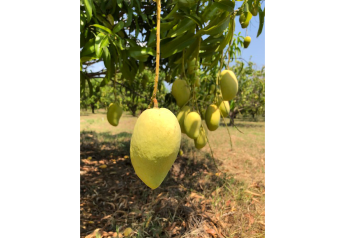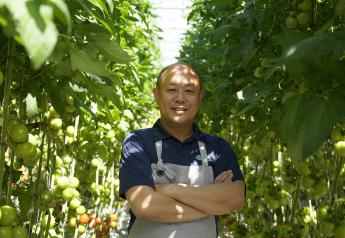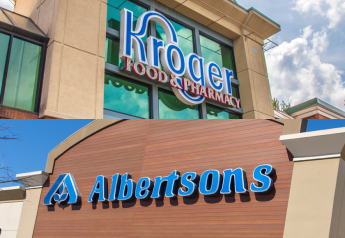Five steps to becoming carbon neutral: How farms can move the sustainability needle past carbon footprint verification

With talk of sustainability buzzing around our industry, it is gratifying to read about the things companies in the food and agriculture sector are doing to reduce their environmental impacts. In my line of work, I have the good fortune to work with companies committed to examining and tackling their impacts, both as part of their business strategy and to safeguard the food system, the ecosystem and the planet.
Getting started can be daunting, however. It’s one thing to know that your farms and facilities have environmental impacts, but another altogether to jump in with a coherent plan of action. Climate impacts are a case in point.
Every farm or facility has a carbon footprint. But calculating your carbon footprint and getting it verified is just the start. To establish their bona fides, companies are increasingly aiming to become “carbon neutral.” These five steps can help you get there.
Step 1: Understand Your Greenhouse Gas Sources
The first step is to identify sources of emissions associated with your operation. This includes, in today’s jargon, a review of all “Scope 1, 2 and 3” greenhouse gas (GHG) emissions.
For most companies, Scope 1 emissions are relatively easy to determine – they’re the emissions released from your own activities due to machinery operation, fertilizer application, livestock management, etc. Scope 2 emissions are indirect emissions resulting from electricity consumption from off-site power generation. Scope 3 emissions are connected to inputs and outputs across the value chain from product cradle to grave, and can factor into your overall footprint quite substantially. Scope 3 can be particularly challenging to quantify because these emissions occur off-site outside of the farm’s control. They can include, for instance, GHGs resulting from the production of animal feed or fertilizer, gases emitted in the production of construction materials used in any new farm infrastructure, and the fuel used in transporting products throughout the world.
Step 2: Assess Your Carbon Footprint
Once emissions sources are identified, companies undertake a comprehensive GHG emission assessment. This is not the verification of your carbon footprint, but the actual calculation of your entire footprint. This step allows you to understand the breadth and scope of your GHG emissions.
While carbon dioxide is the most prevalent of all GHGs, it is not alone. The assessment also takes into consideration methane (CH4), nitrous oxide (N2O), hydrofluorocarbons (HFCs), perfluorocarbons (PFCs), sulfur hexafluoride (SF6), and nitrogen trifluoride (NF3). The predominant pollutants measured for farms are carbon dioxide, methane (especially from livestock operations) and nitrous oxide (from fertilizer use).
Methane is the second most significant GHG affecting climate. Unlike carbon dioxide, which lingers for centuries in the atmosphere, methane remains for only about 12 years, but during that time it packs a powerful punch. Ton for ton, it is 150 times more potent than CO2 during the initial year of emission, 82-times more potent when averaged over 20 years, and 28-36 times more potent when averaged over 100 years. Nitrous oxides, which last in the atmosphere for more than a century, are 265-298 times more potent when compared over 100 years. Hydrofluorocarbons, another class of potent GHGs involved in refrigeration, are being phased down under a 2016 update to the Montreal Protocol on Substances that Deplete the Ozone Layer.
Step 3: Identify Your Emission Hot Spots
Understanding your emission hotspots is key. For example, a tomato producer may need to focus on optimizing its machinery use and fertilization regime, while a cattle rancher might consider feed options that reduce the carbon footprint. A 2021 study from the University of California, Davis reported that methane emissions for beef cattle could drop a staggering 82% when they were fed a seaweed diet. Mitigating these hotspots can have the biggest impact on a farm’s progress toward carbon neutrality.
Step 4: Create a Greenhouse Gas Reduction Plan
Next, a plan of action needs to be put into place to mitigate emissions. This can often result from the implementation of new farming practices or technologies, such as reducing tillage to increase carbon sequestration or investing in an anaerobic digester to produce biogas as a new source of onsite energy and digestates as a new source of fertilizer. Creating a GHG reduction plan not only helps farms reduce their emissions year over year, but is also required within most carbon neutral certification schemes.
Step 5: Implement Strategic Change to Reduce GHG Emissions and Offset Residual Emissions
Creating a plan is one thing; implementing strategic change for long-lasting impact is another.
There’s a myth about carbon neutrality that needs to be debunked: “All we have to do is buy carbon offsets and we’ll be carbon neutral.” That is simply untrue. Numerous carbon neutral standards, most notably the PAS 2060 carbon neutrality standard, include a mandatory benchmark that certified companies must keep reducing annual emissions year over year. If emissions are not reduced from the previous year, a company can no longer retain the carbon neutral certification. However, by implementing strategic changes that demonstrate reductions in your annual GHG emissions and offsetting any residual emissions, you can safely enter the world of carbon neutrality and set a higher standard for farming accountability and environmental stewardship.
Dave Jonas is program manager for environmental consulting services at SCS Global Services.







